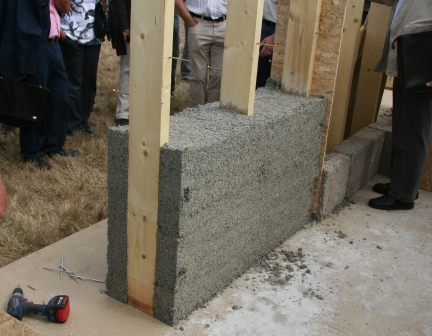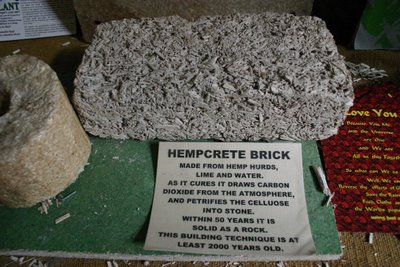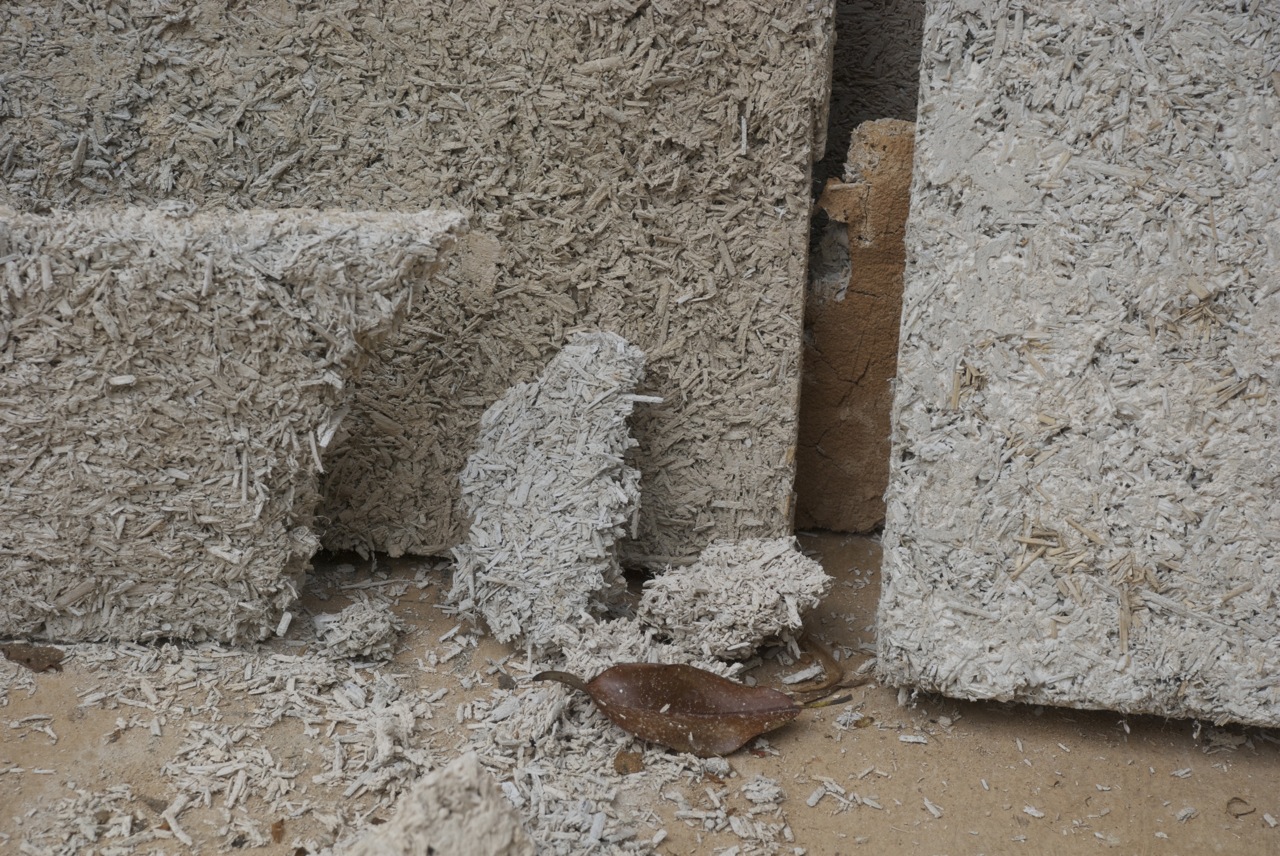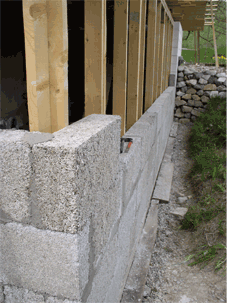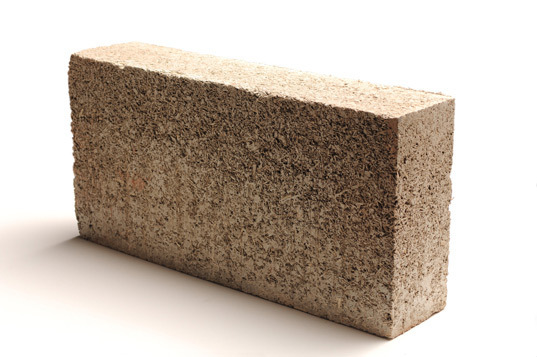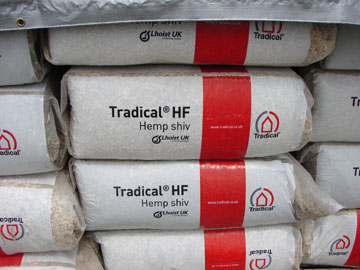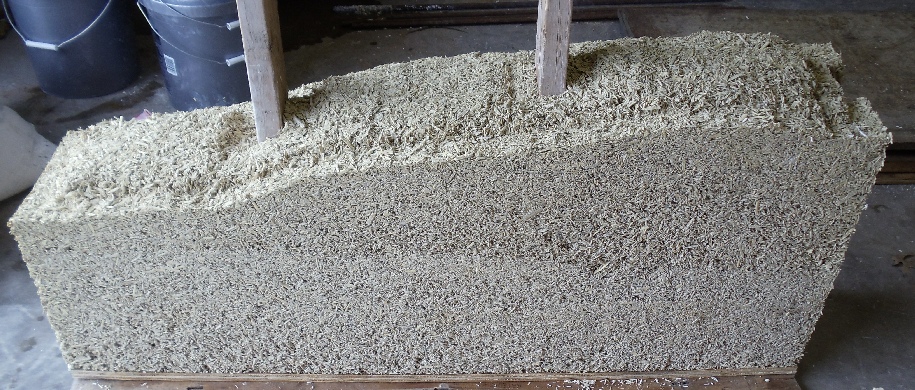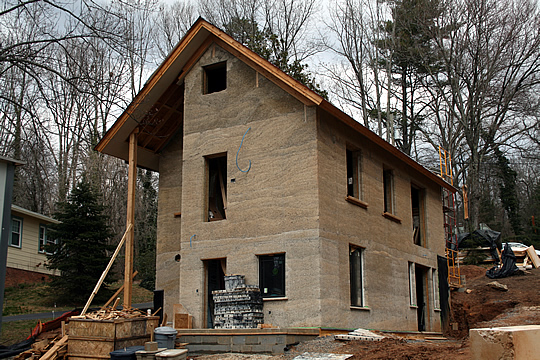You’ve heard of concrete, well this is hempcrete. Hempcrete claims to be an excellent sustainable natural insulator made from 3 basic components: water, lime and hemp. As hempcrete cures it draws carbon dioxide out of the air, which after a few decades turns the hemp into stone. When I finally build my own home, I will definitely be looking at this “green” building material!
About Hempcrete
Combine water, hemp and lime to create hempcrete (sometimes with a touch of cement or quick-set gypsum). Actually, you don’t use the whole hemp plant, just the hemp hurds or shives (the woody core of the cannabis plant stem). While hempcrete is not nearly as strong as concrete, it is reported to be an excellent thermal and acoustic insulator. Hempcrete is also reported to buffer temperature and humidity, prevent mold growth, resist fire and termites. A truly amazing efficient sustainable building material.
One of the photos above claims: “As it cures, it draws carbon dioxide from the air and petrifies the [hemp] cellulose into stone. Within 50 years, [hempcrete] is solid as a rock. This building technique is at least 2,000 years old.”
Hempcrete is currently being used in Europe for some large projects such as the London Science Museum storage facility in Wroughton, Wiltshire, England. This is just the beginning. As humans are forced to consider sustainable building solutions, hemp will likely become a go-to building material. The US should allow farmers to grow hemp again.
A Little About Concrete
In contrast to hempcrete, concrete is made using aggregate, cement and water. As cool as it is, hempcrete isn’t likely to replace concrete as a core building material any time soon. Hempcrete may be an attractive building material alternative for specific situations.
Why is concrete the building staple? Concrete stands the test of time and is a very strong building material when used “in compression”, but very weak “in tension”. To illustrate this: if you can have a 200lb man stand on an small block of unreinforced concrete it will likely be undamaged, however if you had that man hang from that same 200 lb man block it would likely crumble from the tension pulling on it. This physical compression/tension characteristic of concrete is why you see all so much steel “rebar” (reinforcement bar) framed up in new concrete projects. The rebar keeps the concrete in perpetual tension by taking advantage of some of the physics of the concrete curing process. As the concrete cures, the chemical process gives off heat (aka. exothermic). Some of this excess heat is absorbed by steel rebar, which causes the metal to expand and lengthen. When the concrete fully cures, the heat is gone and concrete and rebar begins to cool. As the steel cools, the rebar wants to shorten, which stuggles against the concrete, causing perpetual compression… and strength.
Do You Have Hempcrete Experience?
Let us know about your firsthand experiences with hempcrete in the comments below.









